The solutions to Bridges in Mathematics Grade 3 Student Book Answer Key Unit 2 Module 2 can help students to clear their doubts quickly.
Bridges in Mathematics Grade 3 Student Book Answer Key Unit 2 Module 2
Bridges in Mathematics Grade 3 Student Book Unit 2 Module 2 Session 1 Answer Key
Toby Goes Shopping
Toby went shopping with some of his classmates.
Question 1.
Toby’s classmates split up into 4 groups of 5 students. Which equation matches that situation?
![]() 4 × 5 = 20
4 × 5 = 20
![]() 4 + 9 = 5
4 + 9 = 5
![]() 4 + 5 = 9
4 + 5 = 9
![]() 5 – 4 = 1
5 – 4 = 1
Answer:
Given,
Toby’s classmates split up into 4 groups of 5 students.
4 × 5 = 20
So, option A is the correct answer.
Question 2.
Use numbers, sketches, or words to show your thinking.
a. Toby saw fruit at the store. There were 6 rows of 3 peaches in a box. How many peaches were in the box?
Answer:
Given,
Toby saw fruit at the store. There were 6 rows of 3 peaches in a box.
6 × 3 = 18 peaches
So, there were 18 peaches in the box.
b. Toby’s sister picked up a loaf of bread that was 20 inches long. The basket is 3 times as long as the bread. How long is the basket?
Answer:
Toby’s sister picked up a loaf of bread that was 20 inches long.
The basket is 3 times as long as the bread.
20 × 3 = 60
Thus the basket is 60 inches long.
c. Toby bought some stamps. How much did he pay for these stamps?
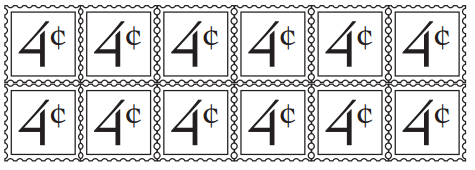
Answer:
There are 2 rows and 6 columns of 4 ¢
2 × 6 = 12
12 × 4¢ = 48¢
d. CHALLENGE Toby saw a tray of little pies. How much does the whole tray of pies cost?

Answer:
There are 3 rows and 6 columns of pie.
3 × 6 = 18
18 × 50¢ = 900¢
Thus the whole tray cost 900¢
Bridges in Mathematics Grade 3 Student Book Unit 2 Module 2 Session 2 Answer Key
Seascape Challenges
Question 1.
Chloe the Clownfish is 4 inches long. She swims past a vase sponge that is 7 times as wide as she is long.

a. How wide is the vase sponge? Use pictures, numbers, or words to show your work.
Answer:
Given,
Chloe the Clownfish is 4 inches long.
She swims past a vase sponge that is 7 times as wide as she is long.
4 × 7 = 28
b. Write an equation for this problem. _____________
Answer:
So, the multiplication equation is 4 × 7 = v
Question 2.
Chloe swims through some sea grass. The sea grass is 9 times taller than Chloe’s length.
a. How tall is the sea grass? Use pictures, numbers, or words to show your work.
Answer:
Chloe swims through some sea grass.
The sea grass is 9 times taller than Chloe’s length.
Chloe the Clownfish is 4 inches long.
9 × 4 = 36 inches
b. Write an equation for this problem. _____________
Answer:
So, the multiplication equation is 9 × 4 = 36 inches
Question 3.
Chloe swims away from an octopus. One of its arms is 24 inches long.
a. How many times longer than Chloe is the arm of the octopus? Use pictures, numbers, or words to show your work.
Answer:
b. Write an equation for this problem.
Answer:
Question 4.
Write your own Chloe story problem. Include an equation with the problem and the answer.
Answer:
Number Line Puzzles
Fill in the blanks on each of the number lines below.
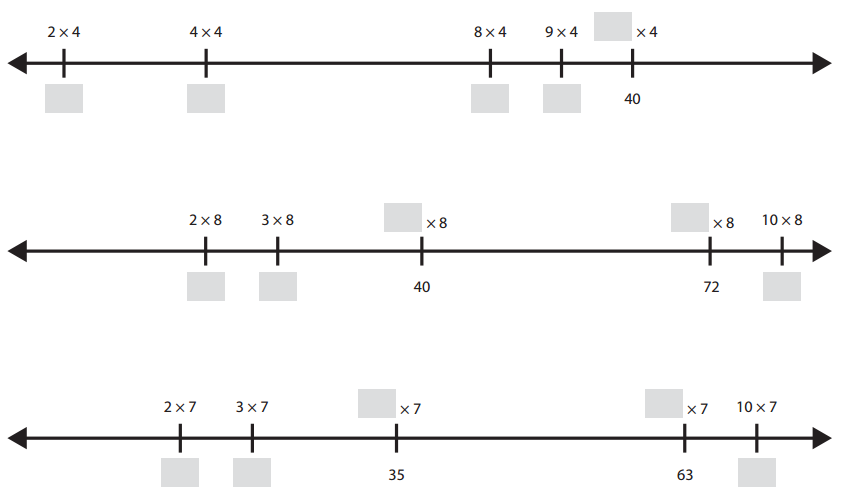
Answer:

Bridges in Mathematics Grade 3 Student Book Unit 2 Module 2 Session 3 Answer Key
Work Place Instructions 2B Frog Jump Multiplication
Each pair of players needs:
- 1 die numbered 1-6
- their own Work Place 2B Frog Jump Multiplication Record Sheets
1. Each player takes a turn rolling the die. The player with the higher roll goes first.
2. The first player rolls the die twice and records the rolls. The first number shows how many jumps to take along the number line. The second number shows the size of each jump.
3. The player predicts (or determines) where they will land after taking the jumps and explains their prediction to their partner.
4. The player makes the jumps and writes a multiplication equation to show the results.

5. Players take turns until each player has had four turns.
6. At the end of the game, players add their four products. They player with the higher sum wins.
Windows & Number Puzzles
Windows
Question 1.
Find the number of panes in each window. Show your thinking with words, numbers, or pictures. Write an equation that shows your thinking for each window.
a.
Equation _______

Answer:
There are 3 rows and each row has 4 panes.
3 × 4 = 12 panes
b.
Equation _______
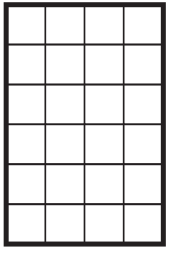
Answer:
There are 6 rows and each row has 4 panes.
6 × 4 = 24 panes
c.
Equation _______
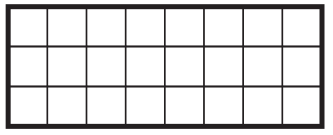
Answer:
There are 4 rows and each row has 8 panes.
4 × 8 = 32 panes
d.
Equation _______
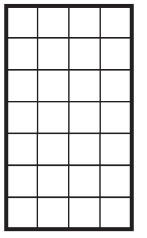
Answer:
There are 7 rows and each row has 4 panes.
7 × 4 = 28 panes
Question 2.
Find the missing numbers in the equations below.
2 × ___ = 12 ____ + 3 = 11 10 × 3 = ____
5 + ___ = 14 17 – 9 = ____ ____ – 3 = 9
6 × 3 = ____ 16 – ___ = 8 ___ + 6 = 13
Answer:
2 × 6 = 12
12/2 = 6
So, 6 is the missing number
8 + 3 = 11
11 – 3 = 8
So, 8 is the missing number
10 × 3 = 30
So, 30 is the missing number
5 + 9 = 14
14 – 5 = 9
So, 9 is the missing number
17 – 9 = 8
So, 8 is the missing number
12 – 3 = 9
9 + 3 = 12
So, 12 is the missing number
6 × 3 = 18
So, 18 is the missing number
16 – 8 = 8
So, 8 is the missing number
7 + 6 = 13
13 – 6 = 7
So, 7 is the missing number
Bridges in Mathematics Grade 3 Student Book Unit 2 Module 2 Session 4 Answer Key
Use multiplication to help solve these puzzles. Fill in each of the blanks on both lines.

Answer:
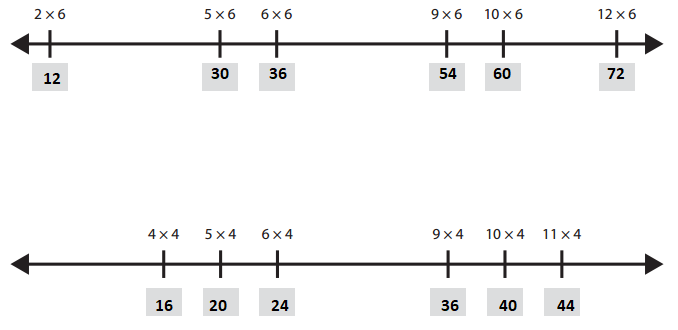
The Watertown Bank
Question 1.
On Wednesday, Wally was cleaning the windows at the bank. He counted the windowpanes as he cleaned, but he kept losing track of how many panes he had counted. Help Wally figure out how many windowpanes there are at the bank. As you solve each problem below, show your work with numbers, sketches, or words.
a.
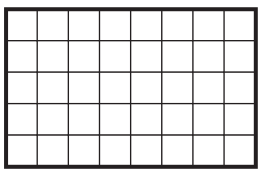
Answer:
There are 5 rows and each row has 8 panes.
5 × 8 = 40 panes
b.
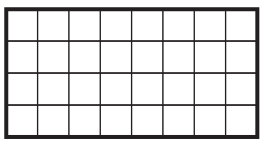
Answer:
There are 4 rows and each row has 8 panes.
4 × 8 = 32 panes
c.
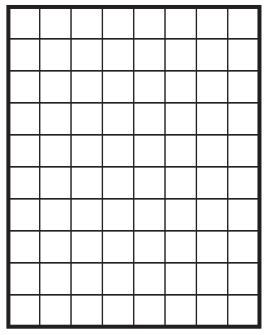
Answer:
There are 10 rows and each row has 8 panes.
10 × 8 = 80 panes
d.

Answer:
There are 9 rows and each row has 8 panes.
9 × 8 = 72 panes
Question 2.
Wally cleaned a window that had 4 window panes. Then he cleaned 9 more windowpanes. Which equation describes the number of panes he cleaned?
(A) 4 × 9 = w
(B) 4 + 9 = w
(C) 9 – w = 4
(D) 4 × w = 9
Answer:
Given,
Wally cleaned a window that had 4 window panes.
Then he cleaned 9 more windowpanes.
4 + 9 = w
w = 13
Option B is the correct answer.
Question 3.
Wally cleaned a window that had 4 rows of windowpanes with 9 panes in each row. Which equation describes the number of panes in the window?
(A) 4 × 9 = w
(B) 4 + 9 = w
(C) 9 – w = 4
(D) 4 × w = 9
Answer:
Given,
Wally cleaned a window that had 4 rows of windowpanes with 9 panes in each row.
4 × 9 = w
w = 36
Option A is the correct answer.
Bridges in Mathematics Grade 3 Student Book Unit 2 Module 2 Session 5 Answer Key
More Post Office Mailboxes
Help Wally figure out how many mailboxes there are on this wall. Use numbers, sketches, or words to show your thinking. Mark your answer clearly.

Work Place Instructions 2C Cover Up
Each pair of players needs:
- 1 spinner overlay to share
- their own 2C Cover Up Record Sheets
1. Players take turns spinning the same spinner. The player with the higher spin goes first.
2. The first player spins both spinners and draws an array with those dimensions on their grid.
3. The player explains to their partner how to find the product represented by the array (the area of the array).
4. The player writes the total product on the array and writes an equation on the line under the grid.
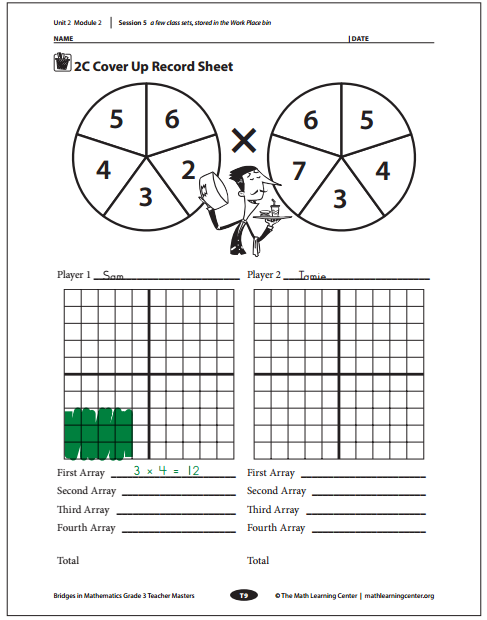
5. Play continues until each player has had four turns.
If a player spins dimensions for an array that will not fit on the grid, they lose that turn.
6. At the end of the game, players add their products. The player whose total is closest to 100 wins.
Watertown Center
Watertown Center is the biggest building in Watertown. There are many businesses, offices, and stores inside Watertown Center.
Question 1.
On Thursday, Wally was cleaning the windows of Watertown Center. There were so many windowpanes that he had no idea how to count them all. Help Wally figure out how many windowpanes are in the front of Watertown Center. Show your work.

Answer:
There are 16 rows and 14 columns.
16 × 14 = 224
Thus there are 224 windowpanes in all.
Question 2.
Fill in the missing numbers

Answer:

Question 3.
Solve the following problems.
2 × 9 = ____ 4 × 9 = ____ 8 × 9 = ____
10 × 9 = ____ 9 × 9 = _____
Answer:
2 × 9 = 18
By multiplying 2 and 9 we get 18.
4 × 9 = 36
By multiplying 4 and 9 we get 36
8 × 9 = 72
By multiplying 8 and 9 we get 72.
10 × 9 = 90
By multiplying 10 and 9 we get 90.
9 × 9 = 81
By multiplying 9 and 9 we get 81.